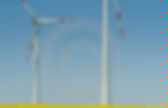

All solar efficiency breakthroughs since 1975 on a single chart. The National Center for Photovoltaics (NCPV), which is part of the U.S.

National Renewable Energy Lab (NREL), maintains a chart that shows efficiency records for all kinds of research solar technologies, from more vanilla to very exotic flavors (thin-film, single-junction cells, multi-junction cells, organic cells, quantum dot cells, etc). Above is the latest version as of April 2013. On it, you can see the steady pace of progress and how different solar cell compositions compare to each other. Of course, these record-breaking cells were probably very expensive to manufacture and made only in very small quantities, so don't expect to see efficiency numbers like these in commercial PV... But over time, yesterday's record-breakers become today's mass-market products, so all this progress isn't just for the sake of breaking records either. The high-resolution version of the chart can be found here. Via National Center for Photovoltaics at NREL. The Most Efficient Solar Energy Under the Sun. Nanoshell whispering galleries improve thin solar panels.
Engineers at Stanford have created photovoltaic nanoshells that harness a peculiar physical phenomenon to better trap light in the solar materials.
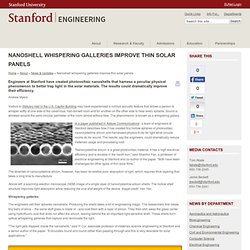
The results could dramatically improve their efficiency. Visitors to Statuary Hall in the U.S. Capitol Building may have experienced a curious acoustic feature that allows a person to whisper softly at one side of the cavernous, half-domed room and for another on the other side to hear every syllable. Sound is whisked around the semi-circular perimeter of the room almost without flaw.
The phenomenon is known as a whispering gallery. In a paper published in Nature Communications, a team of engineers at Stanford describes how it has created tiny hollow spheres of photovoltaic nanocrystalline-silicon and harnessed physics to do for light what circular rooms do for sound. "Nanocrystalline-silicon is a great photovoltaic material.
Above left: a scanning electron microscope (SEM) image of a single layer of nanocrystalline-silicon shells. Perpetua - Renewable energy for Wireless Sensors. Goal Zero - Extreme Portable Power. Apple Designs a Wind Energy Storage Concept. Clean Power Published on January 5th, 2013 | by Nicholas Brown Apple Inc, the well-known manufacturer of phones, desktop, laptop, and tablet computers, has reportedly designed a unique energy storage system for wind energy.
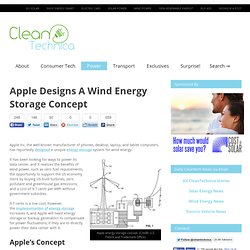
Apple energy storage concept. (Credit: U.S Patent and Trademark Office) It has been looking for ways to power its data center, and it realizes the benefits of wind power, such as zero fuel requirements, the opportunity to support the US economy more by buying US-built turbines, zero pollutant and greenhouse gas emissions, and a cost of 9.7 cents per kWh without government subsidies. Wind Power Innovations. Georgia Tech develops self-charging battery that marches to the owner's beat. Doctoral student's novel solar reactor may enable clean fuel derived from sunlight. 9:18 a.m., April 3, 2012--Producing hydrogen from non-fossil fuel sources is a problem that continues to elude many scientists but University of Delaware’s Erik Koepf thinks he may have discovered a solution.
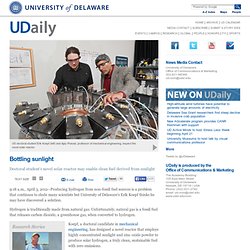
Hydrogen is traditionally made from natural gas. Unfortunately, natural gas is a fossil fuel that releases carbon dioxide, a greenhouse gas, when converted to hydrogen. Koepf, a doctoral candidate in mechanical engineering, has designed a novel reactor that employs highly concentrated sunlight and zinc oxide powder to produce solar hydrogen, a truly clean, sustainable fuel with zero emissions. His advisers are Ajay Prasad, professor of mechanical engineering and director of UD’s Center for Fuel Cell Research, and Suresh Advani, George W. Laird Professor of Mechanical Engineering. New Bladeless Wind Turbine Claimed to be Twice as Efficient as Conventional Designs.
© Saphon When it comes to the future of wind power, one company thinks it looks a lot different than you would expect, and cheaper and more efficient to boot.
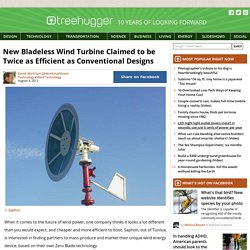
Saphon, out of Tunisia, is interested in finding partners to mass-produce and market their unique wind energy device, based on their own Zero Blade technology. "The Zero-Blade Technology is largely inspired from the sailboat and is likely to increase the efficiency of the current wind power conversion devices. The blades are replaced by a sail shaped body while both hub and gearbox are removed. " SLIDESHOW Wind Energy Today: A Look at Wind Energy Projects Around The World According to the company, their zero-blade technology devices are capable of overcoming the Betz' limit, which states that no turbine can capture more than 59.3 percent of the kinetic energy of the wind. PHOTO: Impressive Beast! The Saphon Zero Blade technology is different in other ways as well, most significantly being storage of energy.